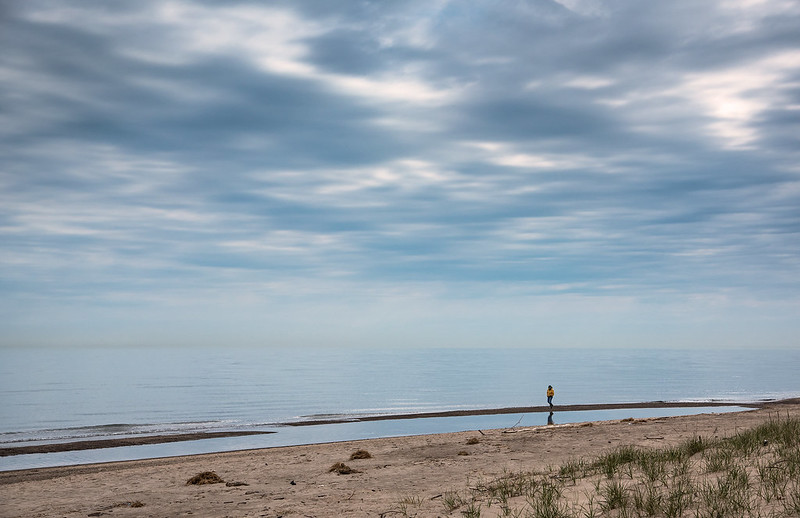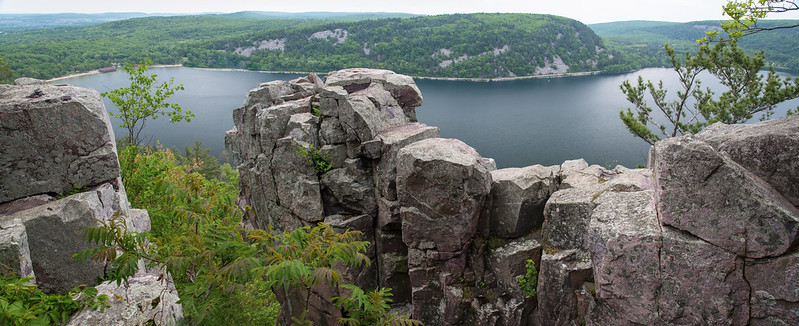
Our first visit to Devil's Lake State Park, near Baraboo, Wisconsin began with a hike up the West Bluff trail. This trail was well maintained, and interestingly enough, paved with asphalt. Not flat like a road, but following the contours of the natural trail, probably to keep the path from erosion. Being one to prefer natural trails, I was first a bit surprised, but then realized the surface did not take a way from the hiking experience.
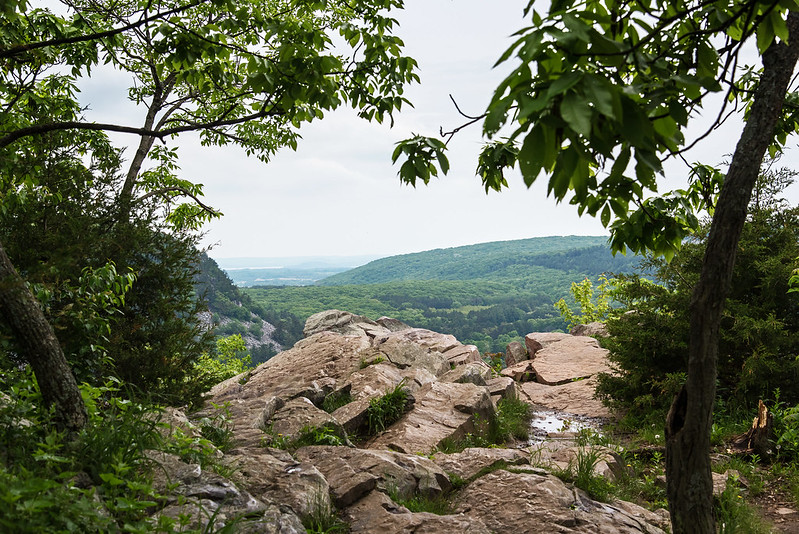
The trail climbed through dense woods, around erratic boulders, winding its way up 500 feet above the lake below. We were surprised by the first overlook we encountered, a sweeping view of the lake and bluffs in the distance. In many parks previously, we were disappointed by the overgrown trees and lack of sweeping vistas from bluff trails- this was different. Every place we wanted a view, we found one, and more.
The rocks of Devil's Lake State Park, are among the oldest outcrops in North America, believed to be 1.6 Billion years old. Originally formed beneath a sea as sandstone, the rocks were then subject to great pressure and heat, the porous sandstone eventually turned to hard metamorphic rock where it was pushed upward by great forces. The seas retreated but filled the area millennia later, only to receive a battering by the Wisconsin glacier during the last ice age. The western bluff was not covered by the ice, but the eastern bluff was. Ice, water, and wind eroded the softer rocks away from the harder quartzite and granite into what we see today.
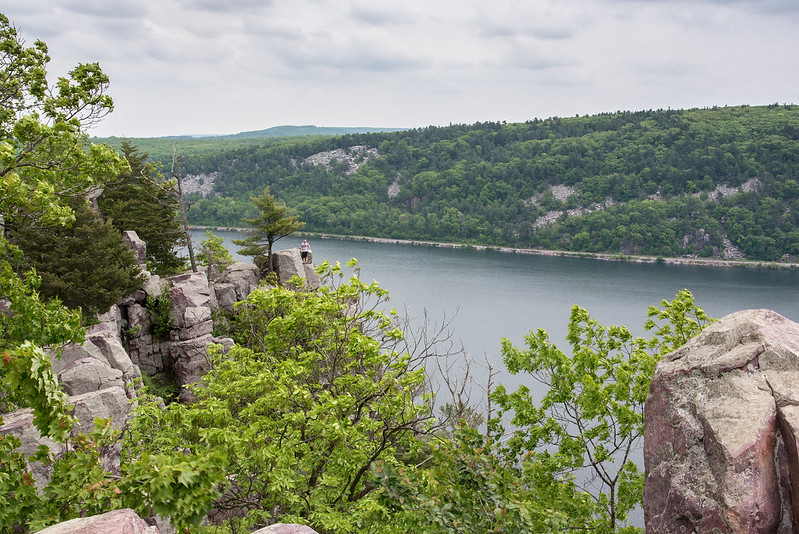
On our 6 hour hike, we encountered numerous overlooks and rock formations, all interesting in their own ways.
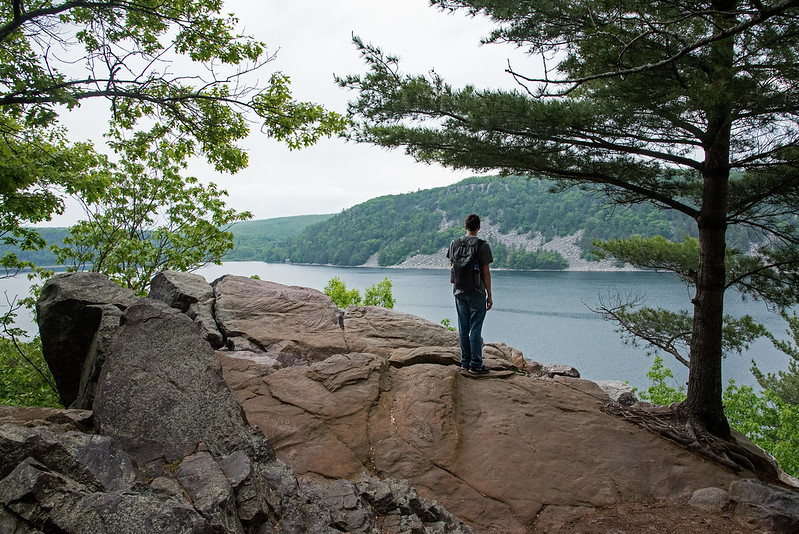 Following our 1.7 mile hike up, across, and down the West Bluff Trail, we crossed the relatively flat south shore of Devil's Lake. The glaciers left a moraine at this spot, dumping a mound of till that helped form the lake by closing off the area between the two bluffs.
Following our 1.7 mile hike up, across, and down the West Bluff Trail, we crossed the relatively flat south shore of Devil's Lake. The glaciers left a moraine at this spot, dumping a mound of till that helped form the lake by closing off the area between the two bluffs.
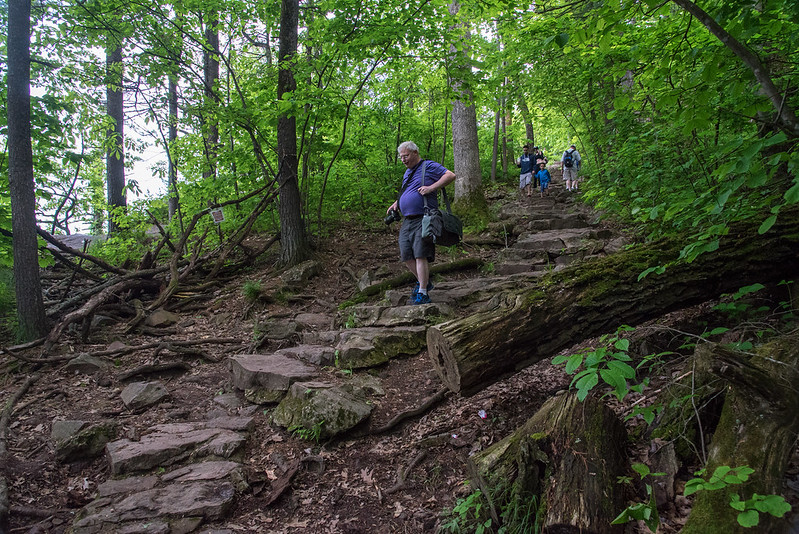 The hike down the West Bluff was a bit challenging, but made easier by the stone stairs arranged by the park. Some of these areas created bottlenecks where tired hikers slowed down to avoid tripping, while young kids ran past with no thought of danger.
The hike down the West Bluff was a bit challenging, but made easier by the stone stairs arranged by the park. Some of these areas created bottlenecks where tired hikers slowed down to avoid tripping, while young kids ran past with no thought of danger.
 Once again, the views of the lake below were fantastic, and the town of Baraboo could be seen on the horizon. It was a strange sensation to watch birds glide below us, as they soared on updrafts created by the twin bluffs. We hiked around three miles, and came upon many interesting rock formations, views, and features, but have yet to see the popular formations that attracted us to the park. Those were on the path ahead.
Once again, the views of the lake below were fantastic, and the town of Baraboo could be seen on the horizon. It was a strange sensation to watch birds glide below us, as they soared on updrafts created by the twin bluffs. We hiked around three miles, and came upon many interesting rock formations, views, and features, but have yet to see the popular formations that attracted us to the park. Those were on the path ahead.



